Search
Remove Ads
Advertisement
Search Results

Image
Tribute Bearers from Urartu
Two bearded male figures from Urartu carrying tribute. This alabaster-bas relief is part of a long tributary scene, where the Assyrian king, Sargon II (not shown here), stands majestically, waiting to receive the tribute from Urartu (modern-day...

Image
Head of Tributary Bearers from Urartu
This alabaster bas-relief is part of a long tributary scene, where the Assyrian king, Sargon II (not shown here), stands majestically, waiting to receive the tribute from Urartu (modern-day Armenia). The man on the right is in front of...
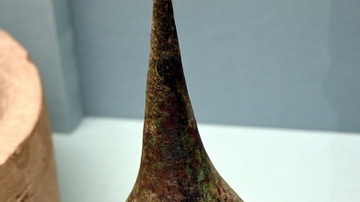
Image
Pointed Bronze Helmet from Urartu
This bronze helmet is decorated with a pattern of dots and crooks ending in bull's heads, which frame the Urartian versions of the Egyptian sun-disc. The pointed shape was designed to deflect arrows. Holes around the edges are for attaching...
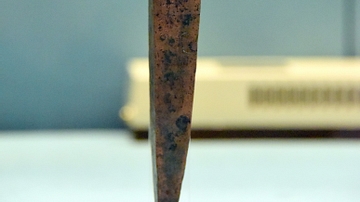
Image
Bronze Wall-Nail from Urartu
Known as siqqatu (in Akkadian), such nails are found in temples and palaces throughout the Middle East in this period. They were embedded in the walls of rooms and may have been used for wall-hangings. From Toprakkale, Eastern Anatolia, in...
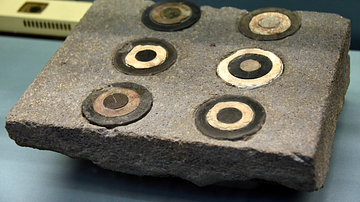
Image
Black Basalt Slab with Inlays from Urartu
This slab (which is inlaid with black and white stone) was part of the paved platform in front of the temple of the god Haldi, the supreme god of the Urartians. The rings were carefully slotted together and secured by a pin so the top would...
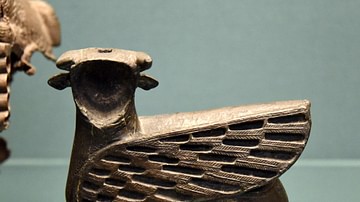
Image
Kneeling Winged-Bull from Urartu
This is a bronze furniture-fitting (probably of a stool) of a kneeling or a recumbent winged-bull. It was originally inlaid and gilded. There is a dowel for attachment at the lower surface. From Toprakkale, Eastern Anatolia, in modern-day...
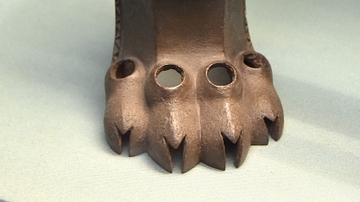
Image
Bronze Lion's Foot from Urartu
This large foot was probably fit into onto the legs of a table or bed. The decoration on the front is an Anatolian version of the Egyptian winged sun-disc. This would have originally been inlaid with knuckles and claws. From Toprakkale, Eastern...
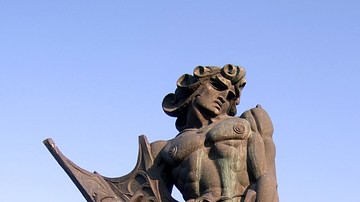
Definition
Armenian Mythology
The mythology of ancient Armenia is a rich blend of indigenous traditions with imported ideas from neighbouring cultures and migrating peoples added over the centuries. The legends and stories helped to explain natural phenomena, provide...

Image
Bronze Deity Figure from Urartu
This is a bronze figure of a standing bearded deity. He wears a pointed and horned helmet. His elbows are flexed with fisted hands. From Toprakkale, Eastern Anatolia, in modern-day Turkey. Urartian, 8th to 7th century BCE. (The British Museum...
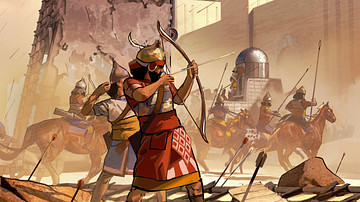
Definition
Assyrian Warfare
Assyria began as a small trading community centered at the ancient city of Ashur and grew to become the greatest empire in the ancient world prior to the conquests of Alexander the Great and, after him, the Roman Empire. While the Assyrians'...